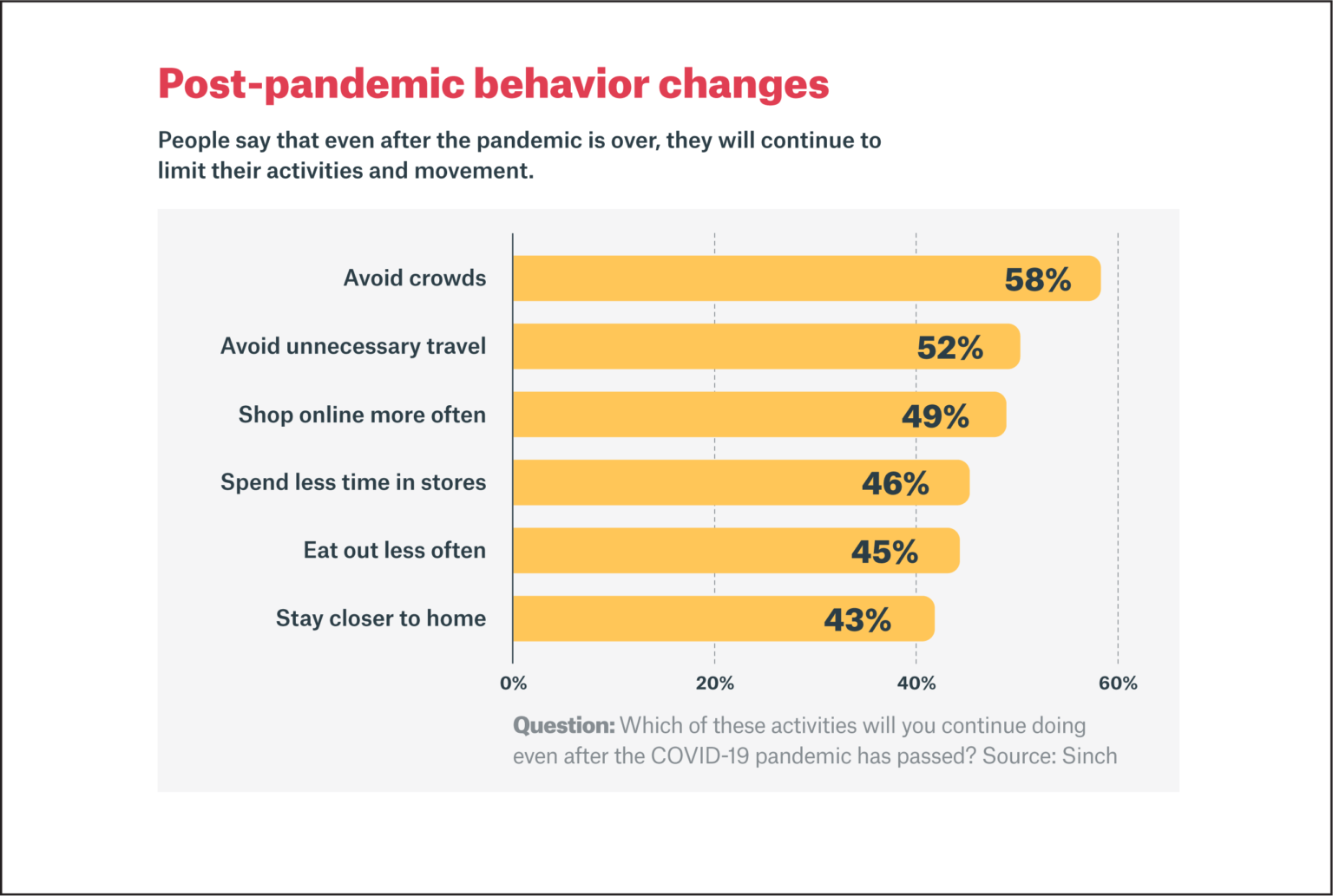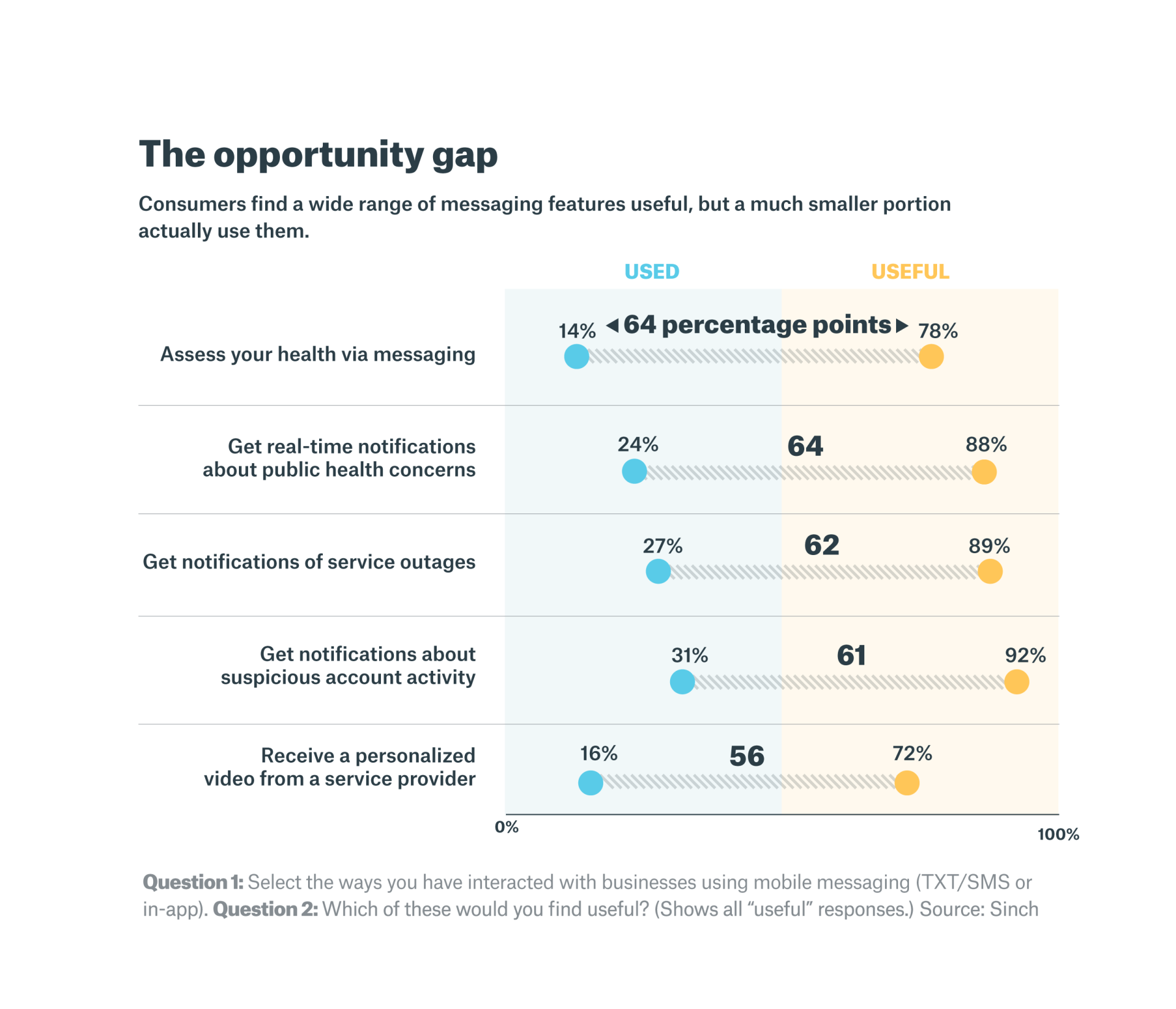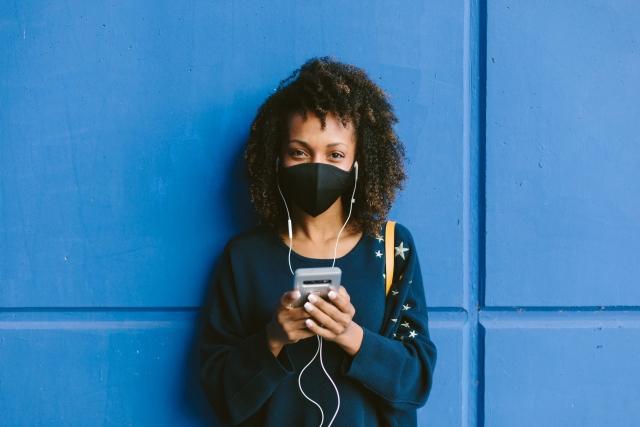New research from Sinch documents a dramatic shift away from public spaces and physical interaction in the COVID era, a disruption likely to accelerate digital transformation among enterprise brands. In a study of 2,890 consumers across 14 countries, the research shows the majority say COVID has profoundly changed their daily habits. And they expect these changes to persist after the pandemic has passed.
Yet the research also found that brands aren’t yet ready to meet the needs of their digitally-empowered customers. Global brands are falling short on delivering the kind of mobile utility and customer experience people expect from their phones. That shortfall -- what Sinch calls the Opportunity Gap -- will require a renewed focus on digital customer experience in the coming years, and a strong focus on delivering AI-fueled, conversational marketing.
A retreat from physical spaces means digital transformation is essential
People predict their daily habits, behaviors, and work will be impacted long after the pandemic has passed. Fifty-eight percent of consumers say they’ll continue to avoid crowds after COVID-19 is over, 52% will avoid travel, and 46% will spend less time inside stores. The changes will also influence work-life: more than 1 in 3 say they will work from home more often after the pandemic.
The use of telemedicine is also up sharply during COVID-19. Of current telemedicine users(39%), 71% began during the pandemic, and the majority plan to continue after COVID-19 has passed. And of those who don’t use it, 59% say they are interested in telemedicine.
What will change after COVID-19 has passed?

These changes signal a massive disruption across industries. Matt Ramerman, President of Sinch for Marketing, explains,
The era of social isolation is here and is likely to remain a central facet of human life beyond the vaccine. Leisure shopping is over forever. Physical stores will exist for must-have items only; otherwise, consumers will ‘live without’ if it is not immediately available for delivery. The drive to digitization is a matter of survival or death for enterprises.
Doubling-down on digital transformation
Despite this shift to digital, the Sinch research shows brands aren’t yet ready to deliver the type of transformative digital experiences customers want most.
The survey asked consumers what brand experiences and features they have used on mobile, versus those they found useful. The gap between usage and usefulness is a compelling look at unmet customer needs in mobile and messaging.
For example, 94% would like to confirm appointments via messaging, but only 52% do so today. Eighty-nine percent want notifications about service outages, but 27% get those today. And 92% want real-time notifications about suspicious activity in their bank accounts, but just 31% receive those types of messages today.

Michael Ricci, Senior Director of Business Development at Sinch, explains,
With COVID-19, the pace of digital transformation has accelerated dramatically — it’s not a conversation starter now, it’s a basic business requirement. Mobile will be the primary centerpiece for customer experience from now on.
A new imperative for the post-COVID world is digital transformation
The question now for brands: given consumers’ reticence about rejoining physical spaces, coupled with a desire to get more utility from mobile, how will brands deliver?
Rather than one-way, batch-and-blast tactics, brands will need to embrace one-to-one conversations that deliver real-time value on the channels, and in the formats, each customer prefers — be it messaging, social, video chat, or voice.
What makes this moment in time so interesting is that just as consumers embrace digital as the new way of navigating their daily lives, so are rich digital mediums exploding in popularity and use. Facebook Messenger and WhatsApp now claim 3.3 billion monthly active users and offer app-like experiences inside the messaging stream. And channels like WeChat, KaKao Talk, and Viber are all gaining new users at historic rates. In other words: customers are demanding more utility, speed, and efficiency from their phones, and in 2020, the technology is there for brands to finally deliver on it.
Want even more details? Find the full report here.



